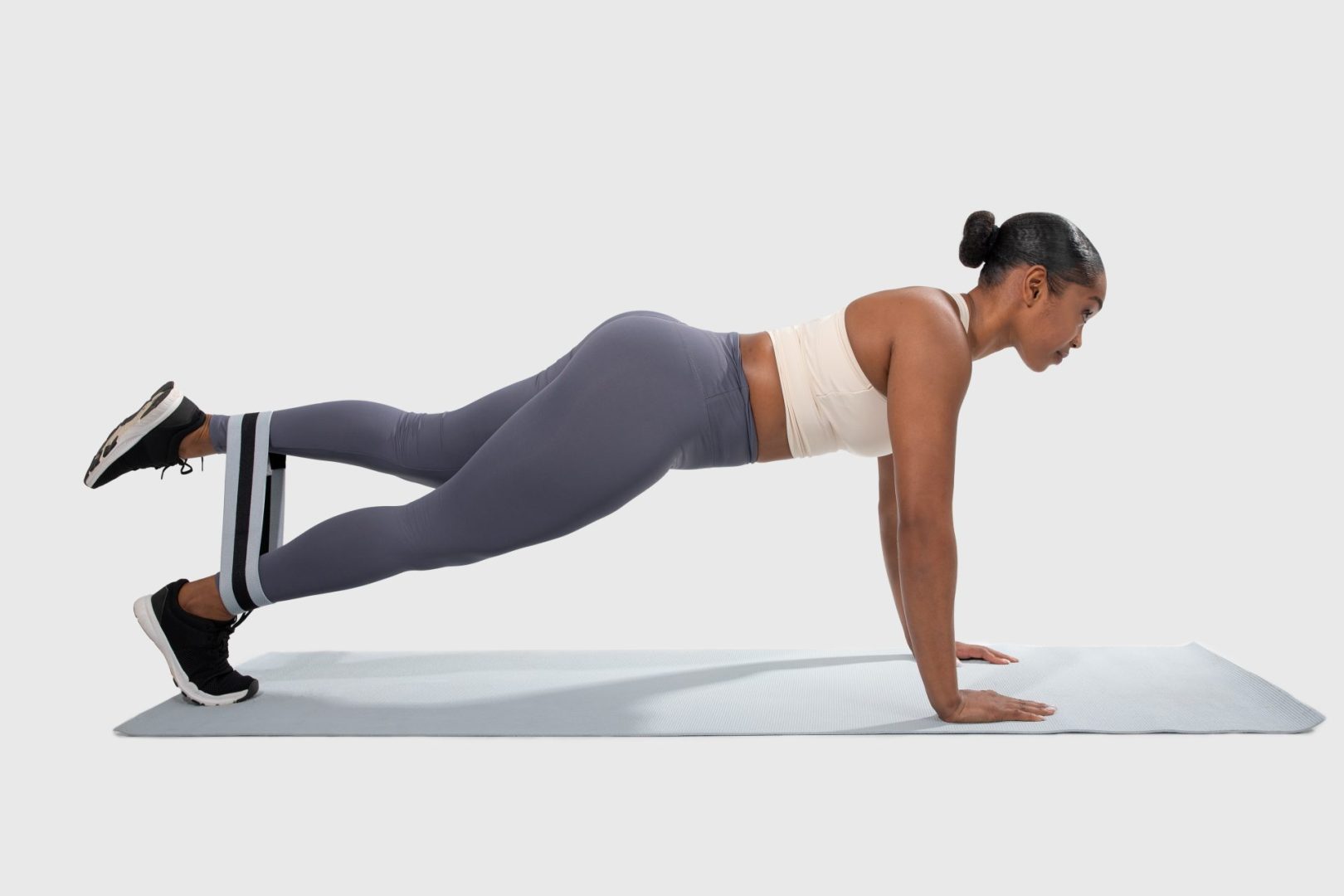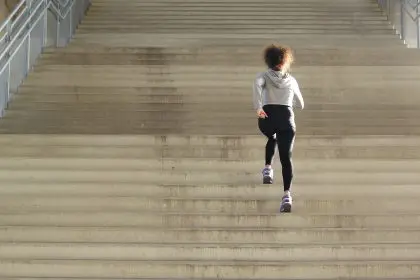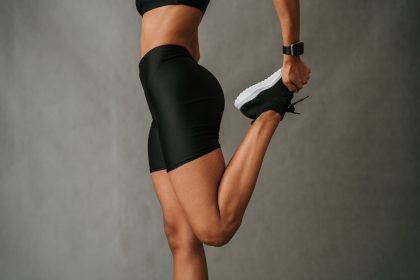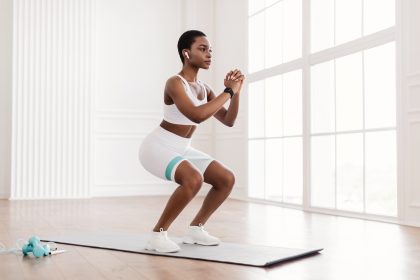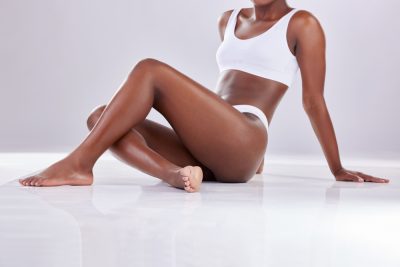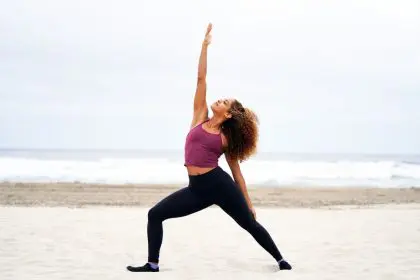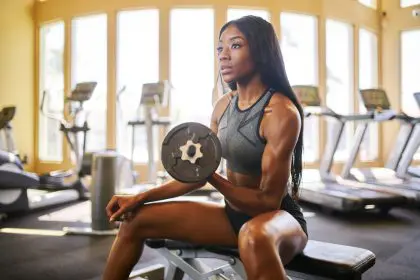A simple adjustment to standard resistance band technique activates deeper muscles for dramatic leg sculpting results.
The fitness world constantly evolves with innovative approaches to build stronger, more sculpted physiques. Among the most accessible and versatile tools, resistance bands offer extraordinary potential for lower body development. Yet most exercisers miss the full benefits by overlooking a specific band position that profoundly reshapes leg musculature. This positioning technique transforms standard exercises into powerful sculpting movements that redefine the entire lower body while enhancing functional strength.
The ankle-to-ankle advantage
Most resistance band users place bands above the knees or below the feet during leg exercises. The overlooked position—securing the band directly around the ankles—creates unique resistance patterns that conventional placements miss entirely. This slight adjustment dramatically alters muscle recruitment patterns throughout the lower body.
When anchored at the ankles, resistance bands create lateral tension that travels upward through the leg’s external chain. This activates the peroneal muscles along the outer lower leg, vastus lateralis (outer quad), and tensor fasciae latae. These muscles typically receive minimal stimulation during traditional resistance training but play crucial roles in leg shape and function.
Deep hip activators finally awakened
The gluteus medius and minimus, hidden beneath the larger gluteus maximus, respond powerfully to ankle-positioned resistance bands. These muscles shape the upper leg’s outer sweep and contribute significantly to hip stability. When properly developed, they create that coveted leg silhouette visible from both front and side views.
Exercises performed with ankle-positioned bands force these muscles to maintain constant tension against lateral resistance. This sustained engagement stimulates muscle fiber development differently than typical squats or lunges. The result manifests as improved leg contours, particularly along the outer thigh where many struggle to create definition.
The adductor transformation
While the outer leg muscles work against the band’s resistance, the inner thigh adductors engage simultaneously as stabilizers. This creates a unique balanced development pattern across the entire thigh circumference. The adductor longus, brevis, and magnus—muscles that typically receive limited attention—undergo significant strengthening and toning.
This comprehensive thigh development addresses the common aesthetic imbalance where outer thighs develop while inner thighs remain undertrained. The ankle position forces these muscle groups to coordinate in ways that reshape the entire upper leg profile rather than just isolated sections.
Ankle stabilizers gain newfound strength
The traditional approach to leg training often neglects the complex network of muscles surrounding the ankles. The ignored band position recruits these stabilizers intensively, strengthening the foundation of the entire leg structure. This activation improves both aesthetics and functional capability.
The tibialis anterior along the shin, peroneus longus along the outer calf, and posterior tibialis behind the ankle all respond dramatically to this positioning. As these muscles develop, the lower leg gains more defined contours while simultaneously building resilience against common ankle injuries.
The calf complex responds differently
Resistance at the ankle level alters gastrocnemius and soleus engagement patterns during movement. Rather than simply contracting and relaxing as in typical calf raises, these muscles must also stabilize against lateral forces. This multi-directional challenge stimulates different fiber recruitment within the muscles.
This altered stimulation creates more comprehensive calf development, addressing both the medial and lateral heads of the gastrocnemius. The result manifests as more three-dimensional calf definition rather than simple front-to-back development, giving the lower leg a more sculptural appearance.
The 5 key exercises to implement
The ankle-positioned band delivers optimal results through specific movements designed to maximize its unique resistance pattern. These exercises create the foundation of the overlooked approach that transforms leg development.
The lateral walk stands as the primary movement in this system. With the band secured around the ankles, taking sideways steps while maintaining tension reshapes the entire leg profile. Three sets of 15-20 steps in each direction provides sufficient stimulus without overwhelming the stability muscles during initial adaptation.
Diagonal walks introduce multi-planar resistance that conventional training rarely addresses. Stepping forward at 45-degree angles while maintaining ankle-width distance between feet engages rotational hip muscles and creates balanced development throughout the entire leg.
The standing abduction, performed by extending one leg directly sideways against band resistance, isolates deep hip muscles that directly influence thigh shape. When performed with proper form—maintaining upright posture without leaning—this movement specifically targets areas most resistant to conventional training approaches.
Seated hip rotations, executed from a chair with feet flat and band around ankles, activate the deep external rotators within the hip that influence both function and aesthetics. By pressing outward against band resistance, these muscles undergo isolated development impossible to achieve in regular workout routines.
The pulse squat, performed with a band at the ankles rather than above the knees, transforms this familiar exercise by shifting resistance patterns throughout the movement. This variation creates significantly different stimulation across all leg muscles, particularly activating areas that traditional squats often miss.
Progressive overload remains essential
While the ankle position creates novel stimulation, progressive resistance principles still govern development. Beginning with lighter resistance allows proper form development while the nervous system adapts to these unfamiliar movement patterns. As technique improves, gradually increasing band tension ensures continued progress.
For optimal results, implement a structured progression system. Start with a medium tension band for two weeks, focusing on perfect form and complete range of motion. Then introduce the next higher resistance level, reducing repetitions slightly to accommodate the increased challenge before gradually building back up.
Frequency drives transformation
Unlike explosive plyometric training that requires significant recovery, these ankle band exercises can be performed more frequently due to their controlled nature and emphasis on smaller stabilizing muscles. This higher training frequency accelerates results and creates faster visible changes.
Incorporating these movements four to five times weekly produces optimal results. The controlled nature of the exercises prevents excessive soreness while providing sufficient stimulus for adaptation. This higher frequency approach allows for cumulative effects that reshape leg musculature more efficiently than conventional twice-weekly leg training.
Practical implementation strategies
Integrating ankle-positioned resistance band work requires minimal time commitment. Adding a dedicated five-minute sequence focusing exclusively on this position at the beginning of regular workouts primes the nervous system to better activate these muscles during subsequent exercises.
For those seeking maximum results, a stand-alone session lasting 15-20 minutes and focusing entirely on ankle-positioned band exercises creates powerful stimulation. This approach works particularly well on recovery days between more intense training sessions, maintaining muscle stimulation without taxing recovery resources.
The functional carryover advantage
Beyond aesthetic benefits, this overlooked band position addresses functional weaknesses that impact athletic performance and daily movement quality. The lateral stability developed through these exercises directly translates to improved performance in sports requiring side-to-side movement, reduced injury risk during recreational activities, and enhanced stability for everyday tasks.
The ankle position specifically strengthens muscles that prevent excessive pronation during walking and running, correcting movement patterns that contribute to knee and hip discomfort. This functional improvement often alleviates minor joint pain while simultaneously improving leg appearance—a dual benefit rarely achieved through conventional training approaches.
The overlooked resistance band position creates a unique approach to leg development that addresses both aesthetic concerns and functional capabilities. By simply repositioning this common fitness tool, exercisers can access untapped potential for lower body transformation. This small adjustment delivers remarkable results that conventional training approaches consistently miss, reshaping legs through comprehensive muscle development rather than isolated strengthening.

